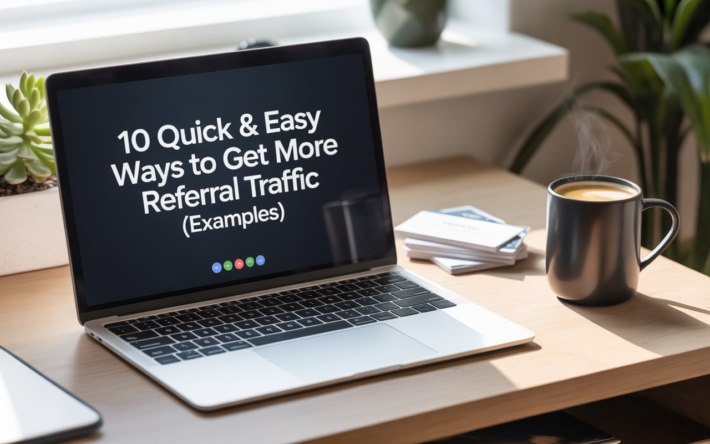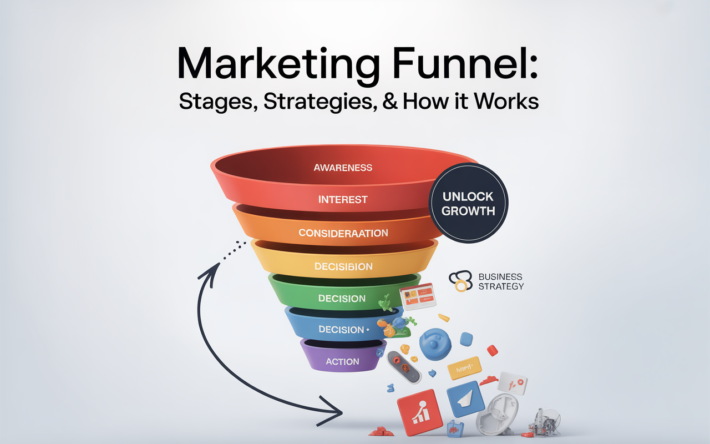Content Performance: 11 Proven Tips for Maximum Results in 2025
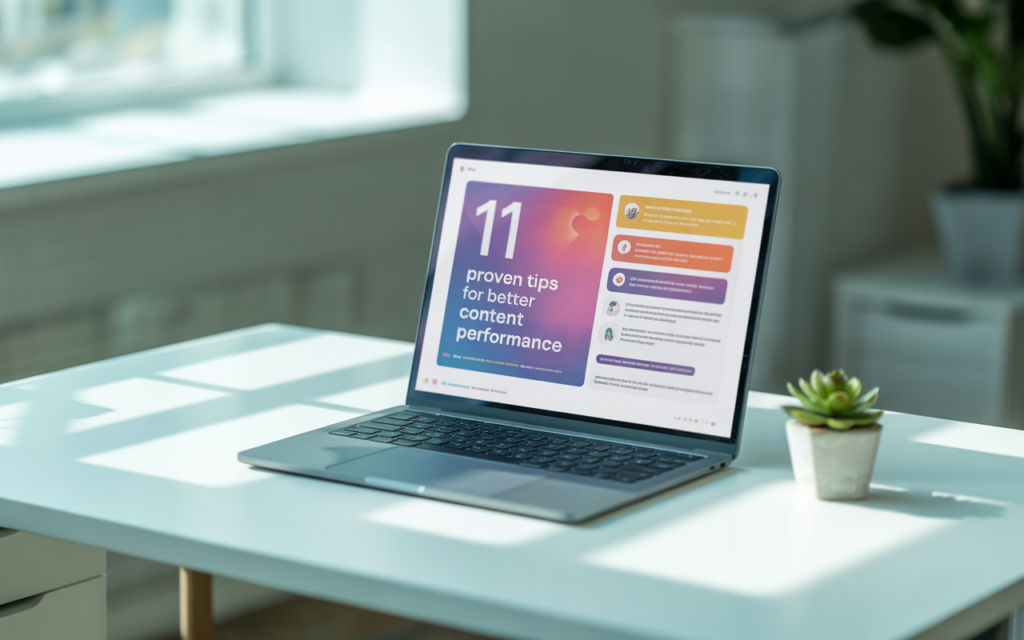
Content performance simply means how well your content achieves its goals—such as attracting traffic, keeping readers engaged, and driving conversions. It shows whether your blogs, social media posts, or videos are actually helping your audience and delivering results for your business.
Why Content Performance Is Important for Growth
For beginners, tracking and improving content performance is crucial because:
- It helps you grow website traffic by understanding what type of content works best.
- It improves engagement since you can create posts that resonate with your audience.
- It increases conversions (leads, sign-ups, or sales) by focusing on content that brings real results.
In short, without monitoring content performance, you’re just creating content blindly. With it, you can make smarter decisions and get faster results.
Read More: How to write a blog 8 Steps You Must Follow
Set Clear Goals and KPIs to Boost Content Performance
Before you start creating or optimizing content, you need to know what success looks like. Setting clear goals and KPIs (Key Performance Indicators) is the foundation of strong content performance.
Define SMART Goals for Content Performance
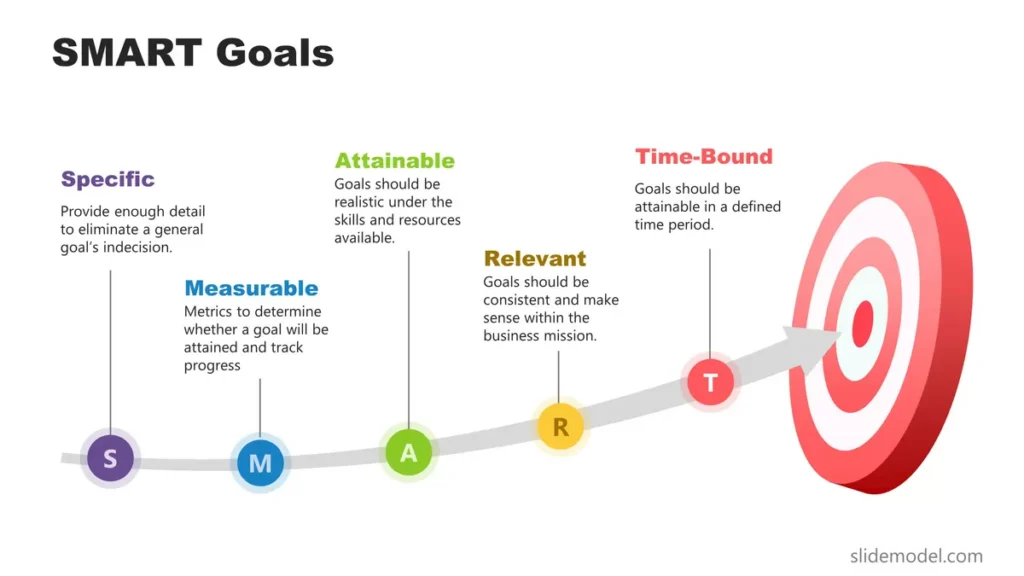
SMART goals are:
- Specific – Example: “Increase blog traffic by 20% in 3 months.”
- Measurable – Trackable through analytics tools.
- Achievable – Realistic for your resources.
- Relevant – Aligned with your overall business or marketing objectives.
- Time-bound – A clear deadline keeps you accountable.
When your goals are SMART, you’ll always know whether your content is truly performing well.
Read More: 11 Expert Tips to Boost Your Content Performance
Track the Right Metrics for Better Content Performance
To measure if your content is working, focus on metrics that match your goals, such as:
- Traffic – How many visitors your content attracts.
- Bounce Rate – Whether people stay or leave quickly.
- Time on Page – If readers find your content engaging.
- Conversions – Sign-ups, downloads, or purchases driven by your content.
By aligning goals with the right metrics, you can improve content performance step by step and avoid wasting effort on content that doesn’t bring results.
Read More: Content Writing AppKod Strategy Revealed by Digital Marketing Marvel
Know Your Audience to Improve Content Performance
One of the biggest secrets to strong content performance is truly understanding your audience. If you don’t know who you’re creating content for, your posts may miss the mark—no matter how well-written they are.
Research Your Readers First
Start by identifying your audience’s:
- Demographics – Age, location, gender, education, and job roles.
- Interests – What topics or formats they enjoy most.
- Needs and Pain Points – The problems they want solutions for.
You can gather this information through tools like Google Analytics, social media insights, surveys, or even direct conversations with your customers.
Create Content That Solves Problems
Once you understand your readers, you can craft content that directly answers their questions and provides value. When people feel your content helps them, they’re more likely to engage, share, and convert—boosting overall content performance.
In short, knowing your audience ensures every piece of content is purposeful and effective.
Create Valuable, High-Quality Content That Drives Content Performance
No matter how good your strategy is, content performance depends on the quality of your content. If your blogs, videos, or social posts don’t provide value, your audience won’t engage—and poor engagement means weak results.
Focus on Value First
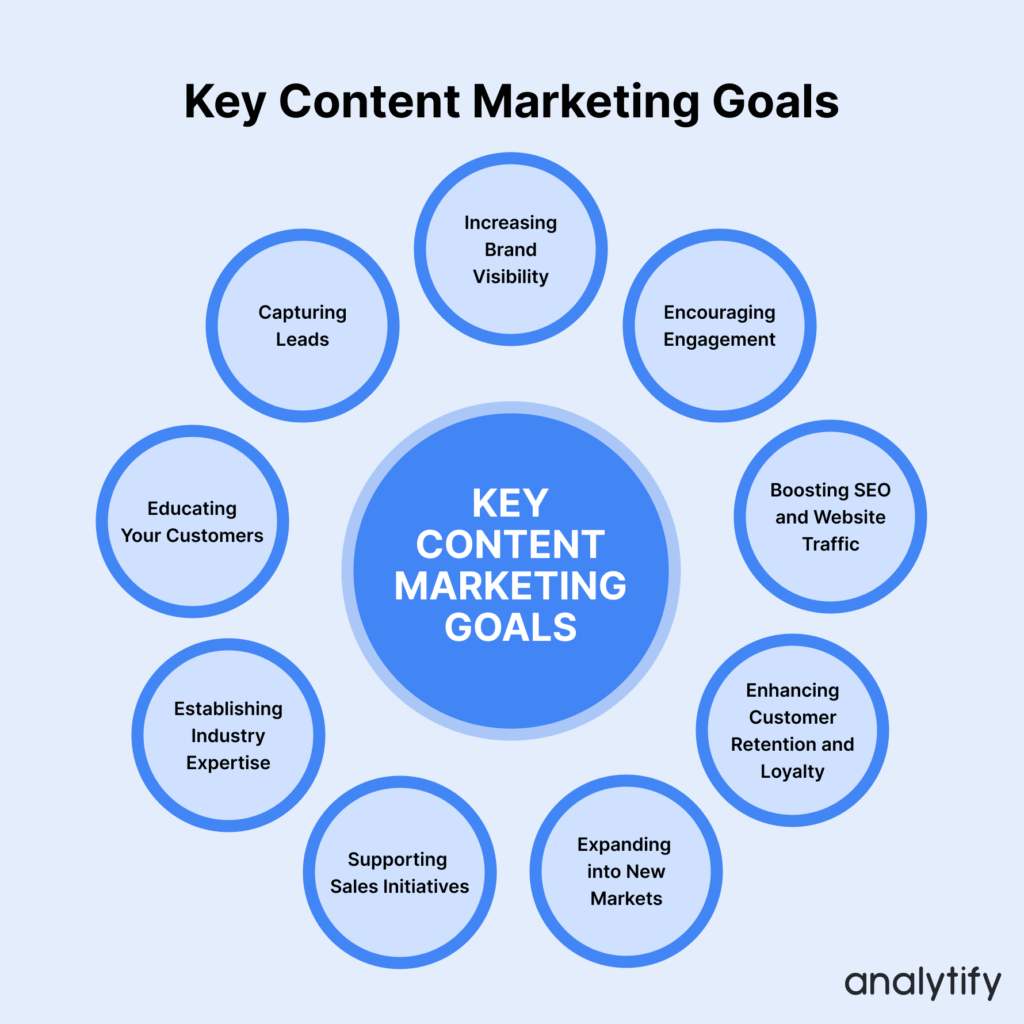
High-quality content should:
- Educate – Teach your audience something new or useful.
- Entertain – Keep them interested with storytelling or creativity.
- Inspire – Motivate them to take action or think differently.
When your content delivers value, people will spend more time on your page, return for more, and even share it with others.
Stand Out With Originality
To boost content performance, avoid generic posts. Instead, use:
- Original ideas and opinions – Share your unique perspective.
- Case studies – Show real results or lessons learned.
- Personal insights – Add experiences your audience can relate to.
By creating content that is both high-quality and unique, you’ll not only attract attention but also build trust—leading to stronger content performance over time.
Read More: What is Content Writing?
Optimize for SEO to Maximize Content Performance
To boost content performance, SEO should be a top priority. Even the best content won’t reach its audience without proper optimization.
1. Use Keywords in the Right Places
Place your target keywords in titles, headings, and meta descriptions naturally. This helps search engines understand your content while making it easier for readers to find. Avoid keyword stuffing—focus on clarity and relevance.
2. Strengthen Content Performance with Internal Linking
Add internal links to connect your articles, blogs, or landing pages. This improves navigation for readers and helps distribute link equity across your site, which strengthens your overall content performance.
3. Boost Content Performance with Backlinks
Encourage external backlinks from trusted websites. High-quality backlinks signal authority to search engines and improve ranking, which directly enhances your content performance.
Read More: Comprehensive Guide to SEO Content Writing for eCommerce & B2B
Improve Readability and Structure for Better Content Performance
Good structure and readability are key drivers of strong content performance. If readers can scan and understand your content quickly, they’re more likely to stay engaged and take action.
1. Use Clear and Descriptive Headings
Break your content into sections with headings and subheadings. This makes it easier for readers and search engines to identify your main points, boosting overall content performance.
2. Write in Short Paragraphs
Avoid long walls of text. Use short paragraphs (2–3 sentences) to keep your content easy to read. A scannable format improves user experience, which directly enhances content performance.
3. Add Bullet Points and Lists
Bullet points help readers find key information quickly. They also make your content look organized, increasing both readability and content performance.
4. Keep a Conversational Tone
Write as if you’re speaking to your audience. A friendly, simple, and clear tone builds trust and ensures readers stay engaged, which leads to better content performance.
Use Storytelling and Data to Fuel Content Performance
Blending storytelling and data is one of the most powerful ways to boost content performance. While numbers build credibility, stories capture emotions and make information memorable.
1. Back Stories with Facts and Statistics
Include reliable data, statistics, or expert insights to strengthen your claims. This builds trust with your audience and improves your content performance by making your content more authoritative.
2. Use Storytelling to Build Connection
Stories help readers relate to your message on a personal level. Whether it’s a customer success story, a brand journey, or a real-life example, storytelling adds depth and increases engagement—both of which enhance content performance.
3. Balance Emotion and Logic
Great content strikes a balance between emotional storytelling and data-driven logic. This combination not only captures attention but also keeps readers invested, driving higher content performance.
Read More: How to Find Guest Post Opportunities | “Write for us”
Diversify Formats to Enhance Content Performance
Relying on one content type limits your reach. To maximize content performance, repurpose and share your ideas across multiple formats. This ensures your message connects with different audience preferences and platforms.
1. Repurpose Content into Engaging Formats
Turn blog posts into videos, infographics, podcasts, or social media posts. Repurposing saves time while expanding your audience reach, which improves overall content performance.
2. Experiment with Different Formats
Test different content types to discover what resonates most with your audience. For some, quick videos may drive more engagement; for others, detailed guides or infographics may deliver stronger content performance.
3. Meet Your Audience Where They Are
Publishing content in multiple formats ensures your brand shows up where your audience spends time. This multi-channel approach directly boosts content performance by increasing visibility and engagement.
Read More: What Are Facebook Ads and How Do Facebook Ads Work
Leverage Social Media to Amplify Content Performance
Social media is one of the most effective tools to expand your reach and maximize content performance. By sharing content strategically, you can attract new audiences, drive traffic, and build stronger engagement.
1. Share Content Across Multiple Platforms
Promote your blogs, videos, or infographics on social platforms like Facebook, LinkedIn, Instagram, and X (Twitter). Each share increases visibility, which boosts your content performance.
2. Use Eye-Catching Visuals
Strong visuals—images, short videos, or carousels—grab attention instantly. Posts with visuals perform better, leading to higher clicks, shares, and improved content performance.
3. Customize Posts for Each Channel
Tailor your messaging to fit each platform. For example, use professional tones on LinkedIn, engaging reels on Instagram, and quick insights on Twitter. Customization ensures better engagement and amplifies your content performance.
Refresh and Update Content to Sustain Content Performance
Refreshing existing content is a smart strategy to maintain and grow content performance. Search engines favor updated, relevant pages, and readers trust content that feels current.
1. Update with New Information and Examples
Add the latest statistics, trends, or case studies to older posts. Keeping your content accurate improves credibility, which helps sustain long-term content performance.
2. Improve Formatting and Headlines
Reformat outdated posts with clear headings, bullet points, and visuals. Updating headlines with keywords can also increase click-through rates, directly enhancing content performance.
3. Add Fresh Media and Internal Links
Incorporate new images, videos, or infographics to keep content engaging. Link to your latest blogs or resources to strengthen SEO and improve content performance.
Read More: What Are Backlinks and How Many Backlinks Per Day is Safe?
Monitor Performance to Maintain and Grow Content Performance
Tracking results is essential for sustaining and scaling content performance. Without measurement, you won’t know what’s driving growth or holding you back.
1. Use Analytics Tools to Measure Success
Leverage tools like Google Analytics, Search Console, or social media insights to track traffic, engagement, and conversions. These metrics reveal what’s working and where your content performance can improve.
2. Identify High- and Low-Performing Content
Pinpoint which articles, videos, or posts are delivering the most value. Doubling down on top performers while improving or repurposing underperforming pieces ensures stronger content performance.
3. Adjust Strategy Based on Data
Use insights to refine your content strategy. Update keywords, change formats, or optimize distribution channels to continuously maintain and grow content performance.
Key KPIs to Measure Content Performance
To track whether your content is truly delivering results, it’s essential to measure the right KPIs (Key Performance Indicators). These metrics reveal how well your efforts are aligned with business goals:
- Organic Traffic – The number of visitors coming from search engines, showing how visible your content is online.
- Engagement Rate – Interactions such as likes, comments, shares, and saves that indicate how well your content resonates with the audience.
- CTR (Click-Through Rate) – The percentage of users who click on CTAs, links, or ads embedded in your content.
- Conversion Rate – The rate at which content turns visitors into leads, sign-ups, or customers.
- Cost per Lead/Conversion – A measure of how efficiently your content drives ROI compared to the resources invested.
- Content ROI – Evaluates the overall return by comparing investment (time, money, tools) with measurable results.
Tracking these KPIs ensures your content performance is tied directly to business growth.
Types of Content That Impact Performance
Not all content delivers the same results—different formats perform differently depending on your audience and business goals. Research shows that businesses using a variety of content types generate up to 67% more leads than those relying on a single format. Here are some of the most impactful content types:
- Blogs & Articles – Excellent for SEO and driving long-term organic traffic. Companies that blog get 55% more website visitors compared to those that don’t.
- Videos – Highly engaging, easily shareable, and effective for boosting brand recall. In fact, video content is shared 1200% more than text and images combined.
- Infographics – Simplify complex information and work well for earning backlinks. Infographics are liked and shared on social media 3x more than other content types.
- Case Studies – Showcase real results, build trust, and drive high-quality conversions—especially valuable in B2B where buyers want proof before investing.
- Podcasts & Webinars – Strong tools for thought leadership, niche authority, and community building. As of 2025, over 460 million people listen to podcasts worldwide.
- Social Media Content – Delivers quick visibility, engagement, and brand awareness. Short-form video platforms like TikTok and Instagram Reels see the highest engagement rates of all social channels.
Balancing evergreen content with trending formats ensures consistent content performance, builds trust with your audience, and keeps your strategy future-proof.
Tools to Track Content Performance
Tracking how well your content performs doesn’t have to be complicated. The right tools make it easier to gather insights, spot trends, and refine your strategy. Here are some beginner-friendly tools to measure content performance:
- Google Analytics & Search Console – Free essentials for SEO, traffic analysis, and understanding which content drives visitors. Over 55% of marketers rely on these tools as their primary data source.
- Ahrefs / SEMrush – Powerful platforms to track keyword rankings, backlinks, and competitors. Ideal for spotting gaps in your content strategy.
- BuzzSumo – Helps you discover what’s trending and see how much engagement specific topics or formats generate across platforms.
- Hotjar – Provides heatmaps and session recordings so you can understand how users actually interact with your content.
- HubSpot / Sprout Social – All-in-one solutions that track leads, engagement, and even integrate with your CRM to link content performance directly to revenue.
Using these tools ensures your content performance is backed by real data, not just assumptions—helping you scale smarter and faster.
Common Content Performance Mistakes to Avoid
Even the best strategies can fail if you overlook common pitfalls. Many marketers unintentionally limit their content performance by making these mistakes:
- Focusing only on traffic, not conversions – Getting visitors is important, but if they don’t sign up, buy, or engage, traffic alone means little. A study by HubSpot shows that businesses tracking conversions are 3x more likely to report positive ROI.
- Ignoring content refreshes – Publishing once and forgetting doesn’t work. Over 70% of top-ranking pages are at least two years old, proving the importance of updating content.
- Not aligning with buyer journey stages – Pushing sales too early can drive audiences away. Content should move readers from awareness → consideration → decision with the right messaging at each stage.
- Over-prioritizing quantity over quality – Flooding your blog with posts won’t help if they don’t solve real problems. Quality, well-researched content drives 2x more engagement than shallow, high-volume posts.
- Forgetting distribution – Even great content fails without visibility. Promoting through SEO, social media, and email is crucial for strong content performance.
Avoiding these mistakes ensures your content performance isn’t just about numbers, but about meaningful business growth.
Advanced Strategies to Boost Performance
Once you’ve mastered the basics, the next step is using advanced tactics to maximize content performance. These approaches help you stand out in competitive markets and engage audiences more deeply:
- A/B Testing Headlines & CTAs – Small tweaks can lead to big results. For example, changing a headline or button color can improve click-through rates by up to 30%.
- Content Personalization – Tailoring content to different audience segments increases relevance. Studies show personalized CTAs convert 202% better than generic ones.
- User-Generated Content (UGC) – Reviews, testimonials, and customer stories build trust. In fact, 79% of people say UGC highly influences their purchase decisions.
- Interactive Content – Quizzes, polls, and calculators create memorable experiences and drive 2x more engagement than static content.
- AI Tools for Optimization – Platforms like ChatGPT, Jasper, or SurferSEO speed up ideation, optimize content, and provide insights that improve overall content performance.
Leveraging these strategies ensures your content performance doesn’t plateau but continues to evolve with audience behavior and industry trends.


